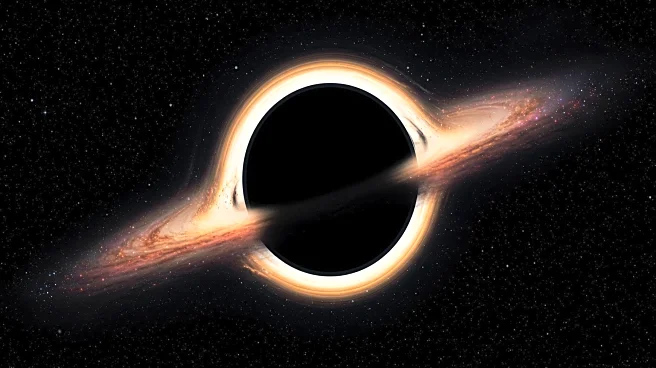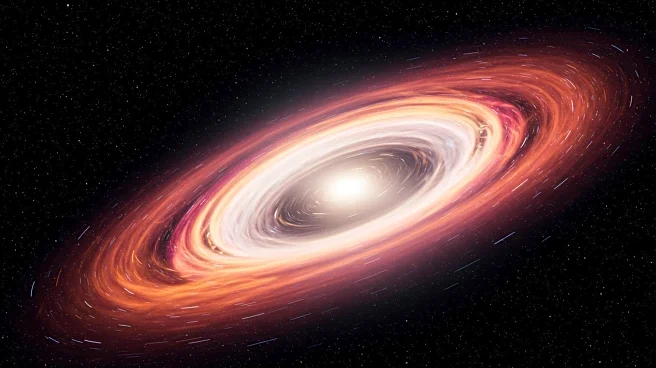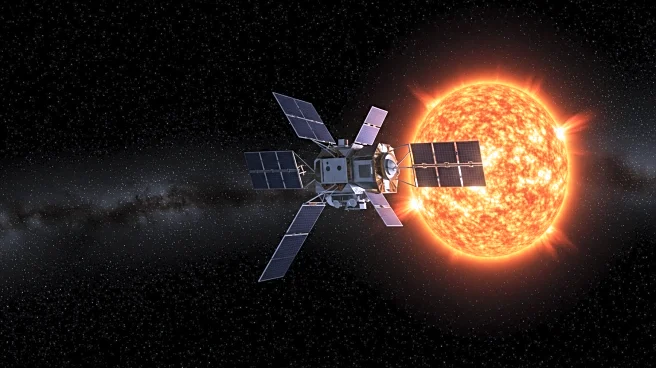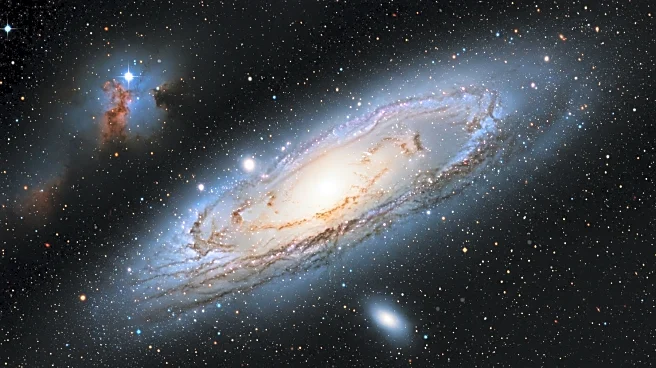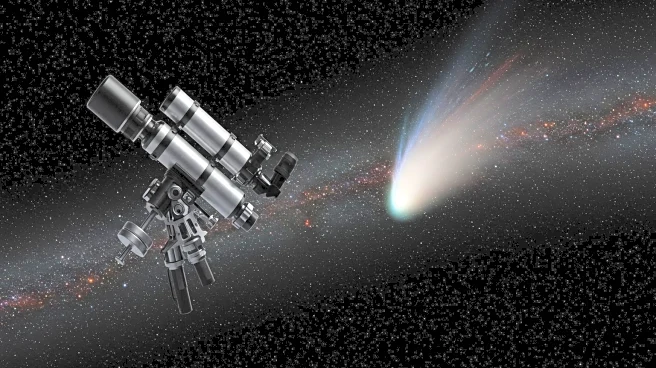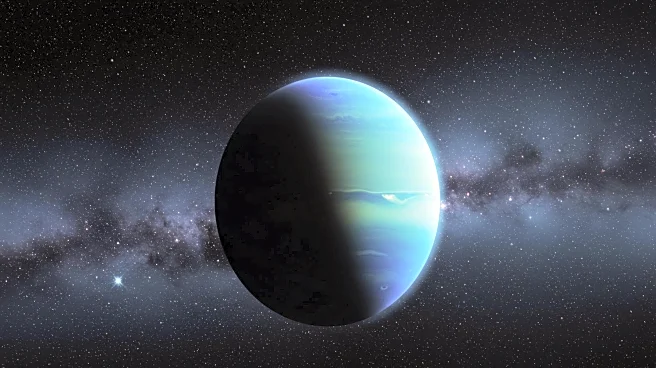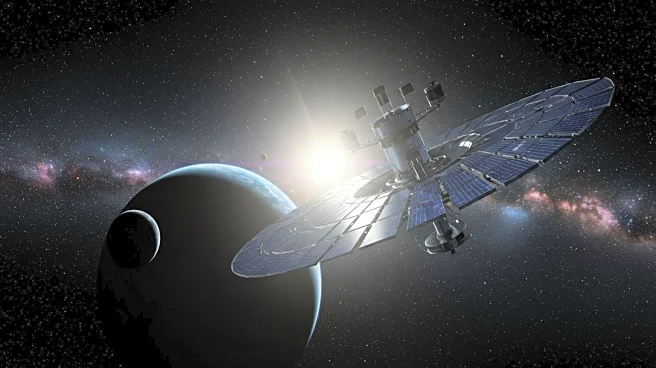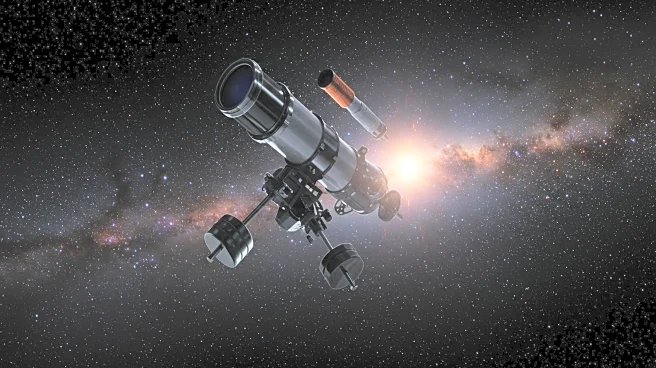What's Happening?
NASA's Imaging X-ray Polarimetry Explorer (IXPE) has observed a black hole known as IGR J17091-3624, located approximately 28,000 light-years from Earth. This black hole, dubbed the 'heartbeat black hole' due to its rhythmic pulses in brightness, is part of a binary system where it feeds on matter from a companion star. The IXPE mission recorded a surprising 9.1% polarization degree of the X-rays emitted by the black hole, a figure much higher than theoretical models had predicted. This observation challenges existing models of black hole environments and suggests new dynamics at play.
Why It's Important?
The findings from the IXPE mission could lead to a significant shift in the understanding of black hole physics. The high polarization degree suggests complex interactions within the black hole's accretion disk and corona, potentially involving powerful winds or relativistic effects. This could impact theories about black hole growth and behavior, influencing future research and observations. The study also highlights the importance of advanced space telescopes in uncovering new cosmic phenomena.
What's Next?
Astronomers are expected to conduct further observations and simulations to explore the implications of the IXPE findings. These efforts may involve testing new models and theories to explain the unexpected polarization degree. The scientific community will likely focus on understanding the role of winds and relativistic effects in black hole environments, which could lead to new insights into the fundamental nature of these cosmic entities.
Beyond the Headlines
The discovery raises questions about the limitations of current black hole models and the need for more comprehensive theories. It may also influence the design and objectives of future space missions aimed at studying black holes and other extreme cosmic phenomena. The findings could contribute to a broader understanding of the universe's most enigmatic objects and their impact on cosmic evolution.
